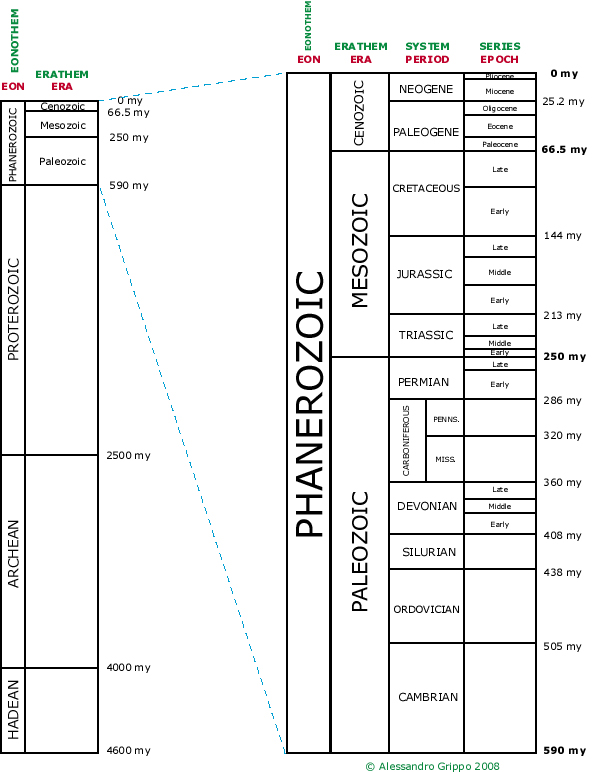
| ||
| prologue | Last Updated • February 20, 2020 | |
This quiz is mostly about learning the subdivisions of the Geological Time Scale. The Geological Time Scale subdivides the entire length of time during which Earth existed as a planet, that is 4.6 billion years, in smaller time units. At this point in the semester it is too early to be looking at how or why this was done (we will do that later on), but you need to start memorizing the names, their hierarchy, the numerical ages, and the chronological order in which these time intervals follow each other. We have discussed the concept of Geologic Time in class and we mentioned the fact that we cannot find a rock or a fossil and immediately tell its numerical age by looking at it. Most likely, and not always, a scientists will be able to assign a relative age to the find.
In order for us to be able to do that, we need a way to tell history based on events that cannot be repeated; if an event is repeated, then we cannot really tell when exactly within a sequence it happened because we cannot build a reference time frame (review PowerPoint notes from the first day of class and also your textbook, pages 3 through 5, then pages 19 through 23). If it is true that rocks cannot completely serve to this purpose, it is also true that we observed that the natural laws of chemistry and physics do not change over time (Principle of Uniformitarianism, by James Hutton). If we only use rocks to depict the passing of time and the sequence of events that happened during that time, Earth History could be represented by a cycle, or a series of different cycles (albeit far from perfect ones) What really has changed for good over time is life: because of evolution by natural selection, life moves as an arrow. Life forms have transitioned from a fauna of very simple chemosyntehtic, prokaryotic, single-celled, mitotic Archaea and Bacteria to today’s complex ecosystems that rely on energy coming from the Sun (through photosynthesis performed by algae and plants) and include plenty of eukaryotic, mostly multicellular, meiotic Protists, Fungi, Animals and Plants. The remnants of these creatures, and of their activities, found in the rock record are called fossils. Fossils outline the path that life forms took over time on Earth. Many important fossils (index fossils) or fossil assemblages (associations of fossils during certain time periods) are used to “characterize” specific time intervals of Earth History. These time intervals are organized hierarchically, and always listed from older (oldest) to younger (youngest): there are four Eons (Hadean, Archean, Proterozoic, Phanerozoic), and Eons are further subdivided into Eras, Eras into Periods, Periods into Epochs, and Epochs into Ages. For instance, the Phanerozoic Eon is subdivided into the Paleozoic, Mesozoic, and Cenozoic Eras. The Cenozoic Era is subdivided into the Paleogene and the Neogene Periods. The Paleogene Period is further subdivided into the Paleocene, Eocene, and Oligocene Epochs, and each of these Epochs into smaller time units called Ages.

What do you need to know in particular?
© Alessandro Grippo, since 1994 | ||